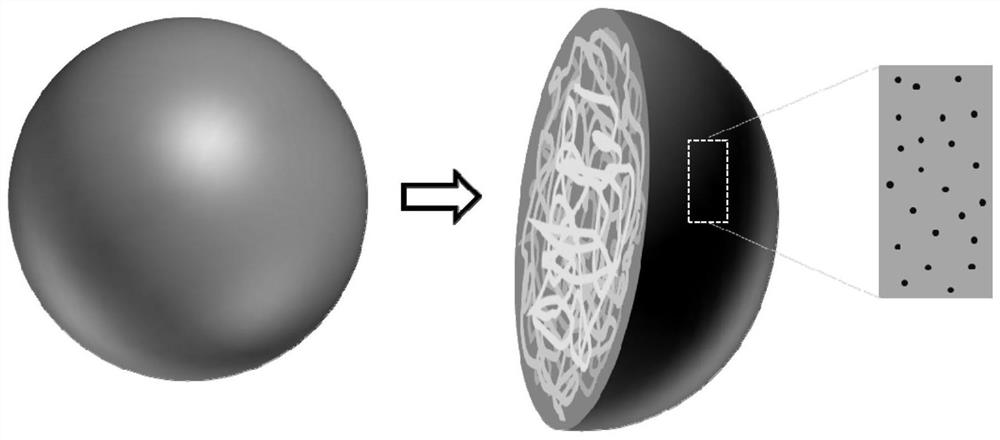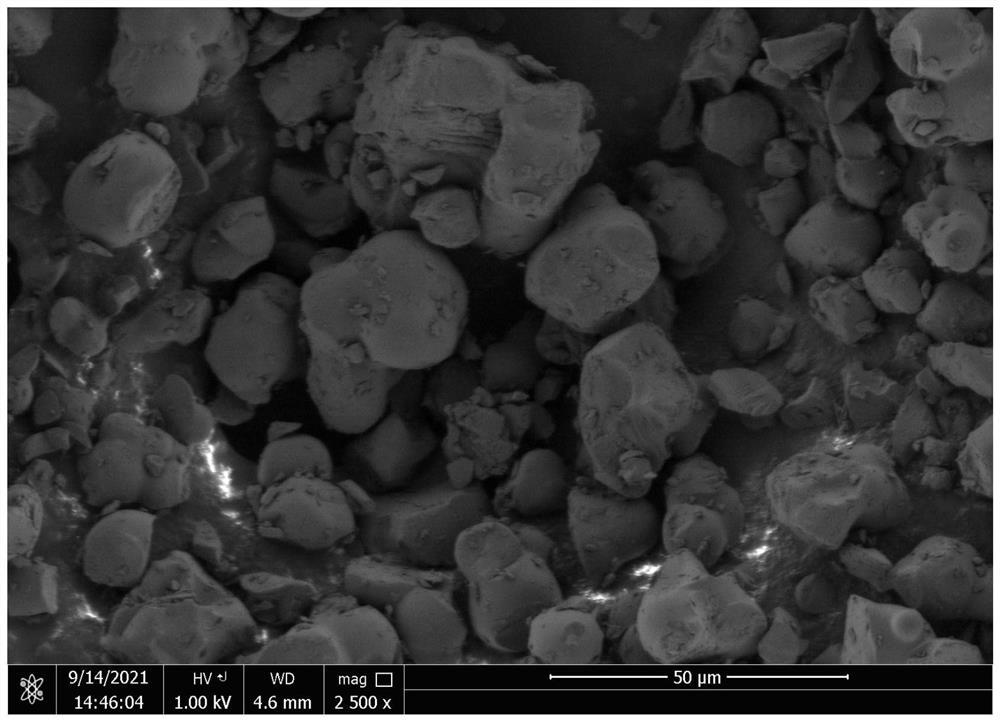Hard carbon negative electrode material and preparation method and application thereof
A negative electrode material, hard carbon technology, applied in battery electrodes, structural parts, electrical components, etc., can solve the problems of irreversible deintercalation, no sodium storage capacity, etc., to achieve excellent cycle stability and enhance the effect of sodium storage capacity
- Summary
- Abstract
- Description
- Claims
- Application Information
AI Technical Summary
Problems solved by technology
Method used
Image
Examples
Embodiment 1
[0056] A method for preparing the above-mentioned hard carbon negative electrode material, comprising the following steps:
[0057] (1) 50g of PEG-4000 (polyethylene glycol 4000) was dissolved in 1000ml of deionized water to prepare a 5% PEG-4000 polymer organic pore-forming solution;
[0058] (2) Under the protection of nitrogen, put cornstarch in a sintering furnace, raise the temperature to 220°C at a heating rate of 1°C / min for 30 hours of cross-linking treatment, and cool to 50°C to obtain a sintered product;
[0059] (3) Take 100ml of the 5% PEG-4000 polymer organic pore-forming solution in step (1) and 100g of the monocalcined product in step (2), and mix them uniformly to obtain the precursor;
[0060] (4) Place the precursor obtained in step (3) in a sintering furnace, raise the temperature to 400° C. at a heating rate of 3° C. / min under a nitrogen atmosphere, and perform aromatic cyclization treatment for 3 hours;
[0061] (5) Place the sample after step (4) aromati...
Embodiment 2
[0063] A method for preparing the above-mentioned hard carbon negative electrode material, comprising the following steps:
[0064] (1) 50g of PEG-4000 was dissolved in 1000ml of deionized water to prepare a 5% PEG-4000 polymer organic pore-forming solution;
[0065] (2) Under the protection of nitrogen, put cornstarch in a sintering furnace, raise the temperature to 220°C at a heating rate of 1°C / min for 30 hours of cross-linking treatment, and cool to 50°C to obtain a sintered product;
[0066] (3) Take 100ml of the 5% PEG-4000 polymer organic pore-forming solution in step (1) and 100g of the monocalcined product in step (2), and mix them uniformly to obtain the precursor;
[0067] (4) Place the precursor obtained in step (3) in a sintering furnace, raise the temperature to 300° C. at a heating rate of 3° C. / min under a nitrogen atmosphere, and perform aromatic annulation treatment for 3 hours;
[0068] (5) Place the sample after step (4) aromatic cyclization pore-forming i...
Embodiment 3
[0070] A method for preparing the above-mentioned hard carbon negative electrode material, comprising the following steps:
[0071] (1) 50g of PEG-4000 was dissolved in 1000ml of deionized water to prepare a 5% PEG-4000 polymer organic pore-forming solution;
[0072] (2) Under the protection of nitrogen, put cornstarch in a sintering furnace, raise the temperature to 220°C at a heating rate of 1°C / min for 30 hours of cross-linking treatment, and cool to 50°C to obtain a sintered product;
[0073] (3) Take 100ml of the 5% PEG-4000 polymer organic pore-forming solution in step (1) and 100g of the monocalcined product in step (2), and mix them uniformly to obtain the precursor;
[0074] (4) Place the precursor obtained in step (3) in a sintering furnace, raise the temperature to 500° C. at a heating rate of 3° C. / min under a nitrogen atmosphere, and perform aromatic annulation treatment for 3 hours;
[0075] (5) Place the sample after step (4) aromatic cyclization pore-forming i...
PUM
| Property | Measurement | Unit |
|---|---|---|
| diameter | aaaaa | aaaaa |
Abstract
Description
Claims
Application Information
 Login to View More
Login to View More - R&D
- Intellectual Property
- Life Sciences
- Materials
- Tech Scout
- Unparalleled Data Quality
- Higher Quality Content
- 60% Fewer Hallucinations
Browse by: Latest US Patents, China's latest patents, Technical Efficacy Thesaurus, Application Domain, Technology Topic, Popular Technical Reports.
© 2025 PatSnap. All rights reserved.Legal|Privacy policy|Modern Slavery Act Transparency Statement|Sitemap|About US| Contact US: help@patsnap.com



